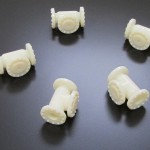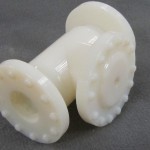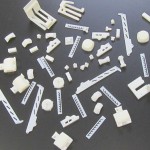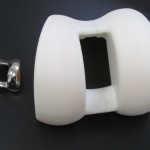It’s been a couple of years now since KiwiMill started making 3D printed parts for our models. It took some experimentation to get this model making tool working for us, but we have settled into a nice rhythm in terms of its use.
About 70% of our jobs now involve some degree of 3D printed parts. At the beginning of a project, our model makers decide what materials they will use to build each part of a custom model. Several factors are considered when deciding what pieces will be fabricated on the 3D printer. The complexity of the part, its use on the model, it’s size and how quickly it needs to be produced are some of the considerations.
The 3D printer is an excellent choice for complex, intricate parts. Once the time is taken to draw up the part in CAD, the printer can effortlessly build a detailed object with great accuracy. Even when factoring in the time it takes to clean support material from a finely detailed piece, it’s often worth the prep work to get a final product that has all of the desired cosmetic effects intact.
Depending on the over all model’s purpose, 3D printed parts may be too delicate for use in a project. They aren’t the best choice for moving parts, or places that need to endure a high degree of impact. However, they may still work well alongside more durable materials such as ABS, metal and tooling board, adding detail to an over all sturdy model.
Not that 3D printed parts can’t be strong. Large, solid parts, with less intricate detail, can be quite durable in nature. However, they are often cost prohibitive. The resin used to create objects on the 3D printer, is relatively expensive material. It doesn’t make sense to 3D print large pieces that can otherwise be hand-built, CNC milled or routed out of another material.
The exception to this would be if timing is a factor. If the item being fabricated can be drawn in CAD, printed, cleaned up and finished quicker than a hand build, it may be chosen in a situation where a deadline is looming.
KiwiMill has yet to completely print a model. Even in cases where the final product was made up mostly of 3D printed parts, it still involved other materials and fasteners holding the various parts together. The 3D printer has not replaced a model maker, either, though we joked about that happening when it first arrived. It is simply another successful tool of the trade that we have fully integrated into our repertoire.




